
Hursley House is an 18th-century Queen Anne style mansion in Hursley, near Winchester in the English county of Hampshire. The building is Grade II* listed.

Hursley House is an 18th-century Queen Anne style mansion in Hursley, near Winchester in the English county of Hampshire. The building is Grade II* listed.
The Hursley estate was bought by William Heathcote, MP from the daughters of Richard Cromwell. Cromwell had acquired the estate by marriage to the daughter of Richard Major, MP. Heathcote commissioned the present house to be built between 1721 and 1724, during the reign of George I, and was created a baronet in 1733. The estate descended in the Heathcote family to the 5th Baronet, whose widow sold it after his death in 1881 to Joseph Baxendale, the owner of the Pickfords logistics and removal company. He sold it in 1902 to Sir George Cooper whose wife, Mary Emma Smith, an American railways heiress from Chicago, [1] commissioned architect Alexander Marshall Mackenzie to carry out extensive development work in 1902 to create the house that can be seen today. Sir George was created a baronet in 1905.
During the First World War the second floor of the house was made available as a nursing hospital for officers. It was intended to turn it over again as a military hospital during the Second World War but Sir George died in 1940. It was requisitioned instead by the Ministry of Aircraft Production (MAP) to rehouse the Design and Production departments of Vickers Supermarine, which had been bombed out of its original premises in Woolston, Hampshire and found that its initial alternative location at Southampton University College was also the target of bombing. [2] The move began 7 December 1940. During its time in the House, Supermarine worked on the development of many aircraft, most famously the Spitfire but also such early jet fighters as the Attacker, Swift and Scimitar. Mary Cooper continued to live at the house until late 1942. [3]
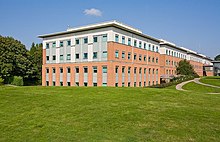
In 1958 IBM started using the House and its grounds as development laboratories. In 1963 IBM purchased the 100 acres (405,000 m²) of surrounding land and have since erected a large modern office complex employing over 1500 people. The original house is still used by IBM as an Executive Briefing Centre. The lower ground floor of the house is home to the IBM Hursley Museum, [4] a computing museum that covers the history of IBM Hursley Park, IBM United Kingdom and IBM Corporation. [5]
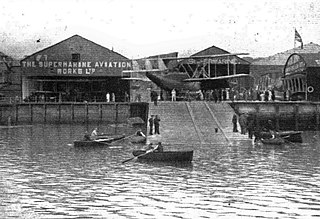
Supermarine was a British aircraft manufacturer. It is most famous for producing the Spitfire fighter plane during World War II. It also built a range of seaplanes and flying boats, winning the Schneider Trophy for seaplanes with three wins in a row in 1927, 1929 and 1931. After the war, the company produced a series of jet fighters.
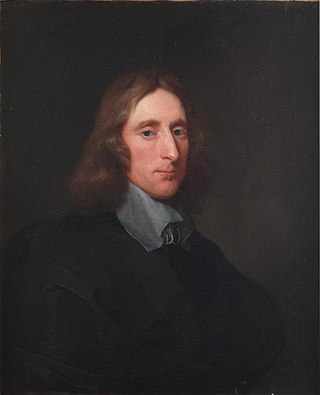
Richard Cromwell was an English statesman, the second and final Lord Protector of the Commonwealth of England, Scotland and Ireland and the son of the first Lord Protector, Oliver Cromwell.

The Barbican Estate, or Barbican, is a residential complex of around 2,000 flats, maisonettes and houses in central London, England, within the City of London. It is in an area once devastated by World War II bombings and densely populated by financial institutions, 1.4 miles (2.2 km) north east of Charing Cross. Originally built as rental housing for middle- and upper-middle-class professionals, it remains an upmarket residential estate. It contains, or is adjacent to, the Barbican Arts Centre, the Museum of London, the Guildhall School of Music and Drama, the Barbican public library, the City of London School for Girls and a YMCA, forming the Barbican Complex.
John James was a British architect particularly associated with Twickenham in west London, where he rebuilt St Mary's Church and also built a house for James Johnson, Secretary of State for Scotland, later Orleans House and since demolished. Howard Colvin's assessment of him was that of "a competent architect, but he lacked inventive fancy, and his buildings are for the most part plain and unadventurous in design".

Earl of Macclesfield is a title that has been created twice. The first creation came in the Peerage of England in 1679 in favour of the soldier and politician Charles Gerard, 1st Baron Gerard. He had already been created Baron Gerard, of Brandon in the County of Suffolk, in 1645, and was made Viscount Brandon, of Brandon in the County of Suffolk, at the same time as he was given the earldom. These titles are also in the Peerage of England. Lord Macclesfield was the great-grandson of the distinguished judge Sir Gilbert Gerard, Master of the Rolls from 1581 to 1594. He was succeeded by his eldest son, the second Earl. He was involved in the Rye House Plot of 1683, was sentenced to death but later pardoned by the King. On his death without legitimate issue in 1701 the titles passed to his younger brother, the third Earl. He had earlier represented Yarmouth, Lancaster and Lancashire in the House of Commons. When he died in 1702 the titles became extinct.

Hursley is a village and civil parish in Hampshire, England with a population of around 900 in 2011. It is located roughly midway between Romsey and Winchester on the A3090. Besides the village the parish includes the hamlets of Standon and Pitt and the outlying settlement at Farley Chamberlayne.

Stargroves is a manor house and associated estate at East Woodhay in the English county of Hampshire. The house belonged to Mick Jagger during the 1970s and was a recording venue for the Rolling Stones and various other rock bands, as well as a filming location for Doctor Who.

Caleb Heathcote served as the 31st Mayor of New York City from 1711 to 1713.
There have been two baronetcies created for people with the surname Heathcote, both in the Baronetage of Great Britain and both created in 1733. The holders of the first creation were later elevated to the peerage as Baron Aveland and Earl of Ancaster, which titles are now extinct. However, both baronetcies are extant as of 2008.
This is a list of High Sheriffs of Hampshire. This title was often given as High Sheriff of the County of Southampton until 1959.

Southbroom House is an 18th-century Grade II* listed house in Devizes, Wiltshire, England. The house and its grounds were bought by Wiltshire County Council in 1925 for use as a school, and today the house forms part of Devizes School, the town's secondary school.

Sir William Heathcote, 1st Baronet, of Hursley, Hampshire, was a British merchant and politician who sat in the House of Commons between 1722 and 1741.
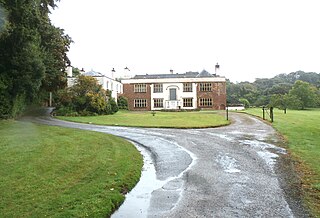
Orchard Wyndham is a historic manor near Williton in Somerset, centred on the synonymous grade I listed manor house of Orchard Wyndham that was situated historically in the parish of Watchet and about two miles south of the parish church of St Decuman's, Watchet. Parts of the manor house are medieval. It has been owned for more than 700 years by the prominent Wyndham family, who continue there as of 2015.

Cranbury Park is a stately home and country estate situated in the parish of Hursley, Winchester, England. It was formerly the home to Sir Isaac Newton and later to the Chamberlayne family, whose descendants continue to own and occupy the house and surrounding park and farmland in the 21st century. The house and park are not generally open to the public, although open days are occasionally held.

Thomas Dummer (1739–1781) was an English Member of Parliament for Newport (1765–1768), Yarmouth (1769–1774), Downton in Wiltshire (1774), Wendover in Buckinghamshire (1775–1780) and Lymington in Hampshire (1780–1781).

The Supermarine Spitfire is a British single-seat fighter aircraft used by the Royal Air Force and other Allied countries before, during, and after World War II. It was the only British fighter produced continuously throughout the war. The Spitfire remains popular among enthusiasts. Around 70 remain airworthy, and many more are static exhibits in aviation museums throughout the world.

IBM Hursley is a research and development laboratory belonging to International Business Machines in the village of Hursley, Hampshire, England. Established in Hursley House, an 18th-century Queen Anne style mansion in 1958, the facility has been instrumental in the development of IBM's software technologies since the 1950s. It is still the home of development for CICS and MQ technology. Among the software developed by IBM Hursley is the Customer Information Control System (CICS), used in ATMs, which was the first Hursley product with a billion dollars in annual revenue.

The Aviation Heritage Museum is a museum located in the Perth suburb of Bull Creek in Western Australia. Created and maintained by the Air Force Association of Western Australia, it houses many military and civilian aircraft, aircraft replicas and aircraft engines, of types that have served in the Royal Australian Air Force or that have relevance to aviation in Western Australia.
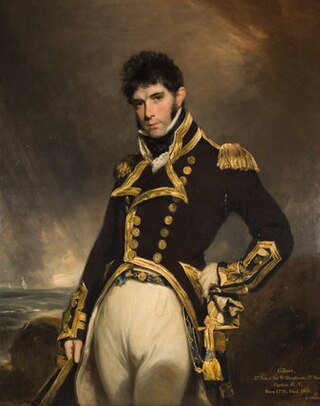
Gilbert Heathcote was an officer of the Royal Navy who served during the French Revolutionary and Napoleonic Wars.
Sir Charles Wyndham was an English politician who served as a Whig Member of Parliament from 1679 to 1701.